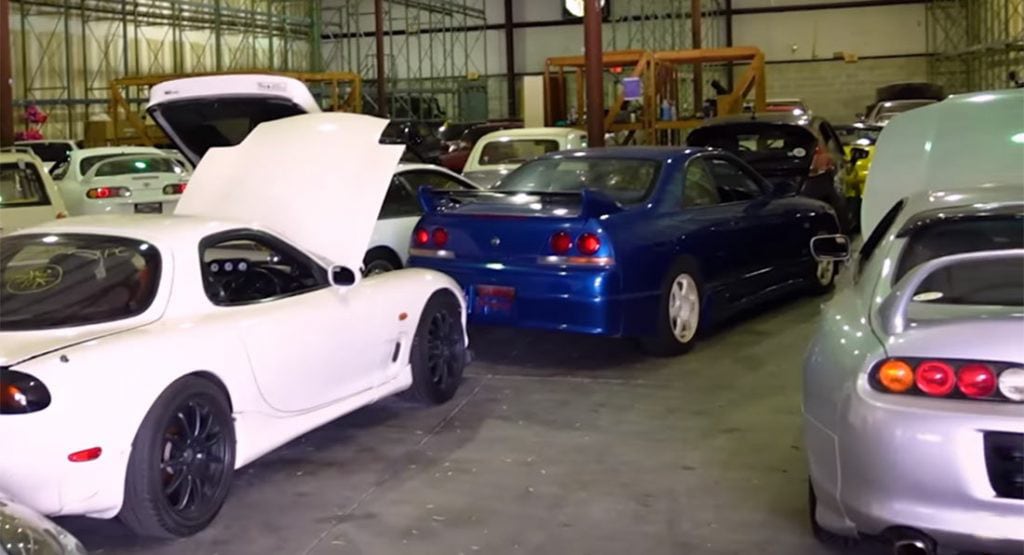In America, The JDM car market has taken off in recent years, with icons such as the Nissan Skyline, Toyota Supra, and Honda NSX taking the spotlight. With a fixed supply and booming demand, the prices of these icons have gone through the roof.
I still remember back in 2014, when the first R32 Skyline GTRs became legal under the 25 year rule. You could get a good example for 20-25k, and the cleanest, unmodified cars were around 30k USD. Since then, prices have nearly tripled, and the rough example that was 15k not too long ago is now a solidly 30k car. Despite this, many great cars have remained overlooked, and the market’s loss is your gain, meaning even if the best JDM car for under 5k is a toy car, fantastic bargains are still out there.
As with any Japanese import, these are 25+ year old cars, so manage your expectations accordingly. And despite the rising prices, good bargains are still out there. Of JDM cars that Americans can buy, these four are fantastic options.
(All prices courtesy of Goo Net Exchange)
Table of Contents
Best JDM car under 10k: 1991-1996 Honda Beat
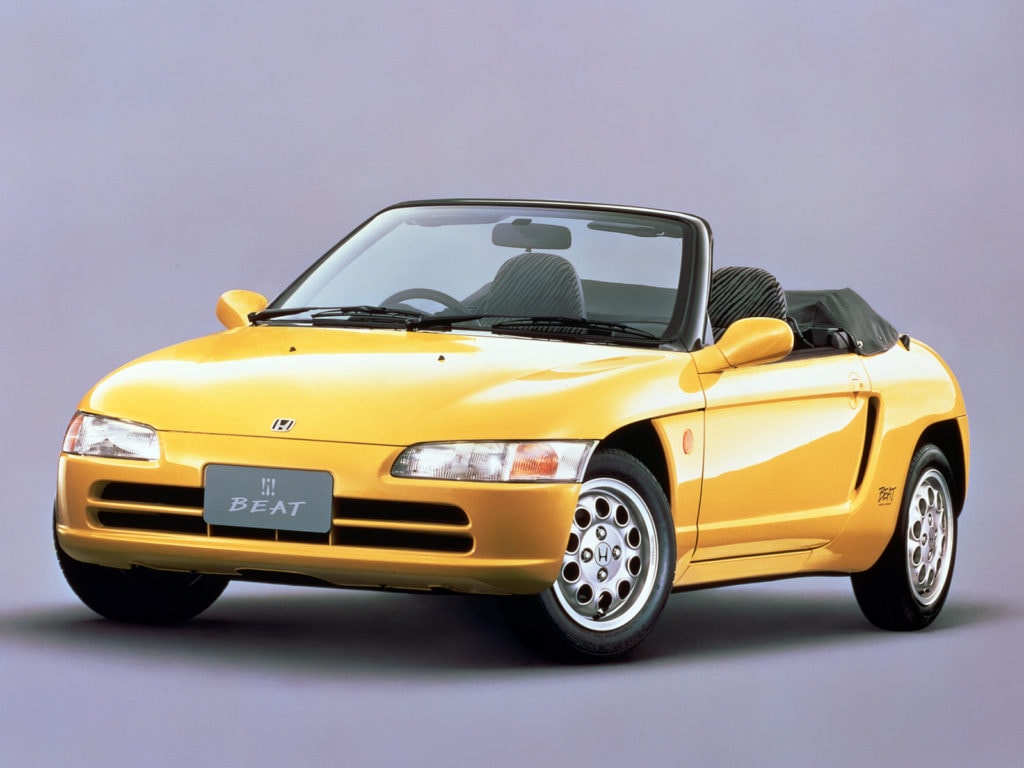
At this price point, the best JDM cars that will be available to you, the American import buyer, are classic Kei Cars. They are restricted in dimensions and engine displacement to receive favorable tax treatment from the Japanese government, and around these regulations passenger vans, trucks, off-roaders, cargo vans, and commuter hatchbacks have all emerged. And when I said they are restricted in dimensions? Yeah, they are REALLY SMALL. They are closer to a ride-on lawnmower in size than a Honda Fit.
However, from these size limitations an excellent type of sports car emerged that was even smaller than the Mazda Miata, and among the best of those is the Honda Beat. Like nearly every other Kei Car, the Honda Beat has a 660cc 3 cylinder engine that produces 63 horsepower. But, Honda made the decision to produce a Pininfarina-designed, mid engined roadster within the kei class. That, when coupled with Honda’s famously high revving engines from the 90s, resulted in a car that is truly special, and best described as a “half-sized NSX.”
Is the Beat practical? Not in the slightest. Is it fast? No way. But that isn’t the point. If you want something that is fun and you can use all of the car’s powerband, this is the best car to buy. Why? Because it is a small and not that powerful, even absolutely thrashing the car and revving it out on public roads won’t bother anyone’s day, and you won’t be breaking any laws, since most of this will be around 30-50 mph. And being a Honda from the 90s, it will be dead reliable while it does it.
Despite their growing popularity, the Honda Beat remains affordable, and finding an example for under 10k in Japan is pretty straightforward. Just make sure there is no rust. Other than checking for oil consumption, these cars have very few reliability issues mechanically, making a Honda Beat a fantastic, affordable sports car that will hands down, be the most fun you will have in a slow car. The fact it can help you learn about mid-engined driving dynamics, all while getting great gas mileage and not paying through the nose on repairs, is just a nice bonus!
Best off-road Vehicle: 1986-2006 Mitsubishi Delica
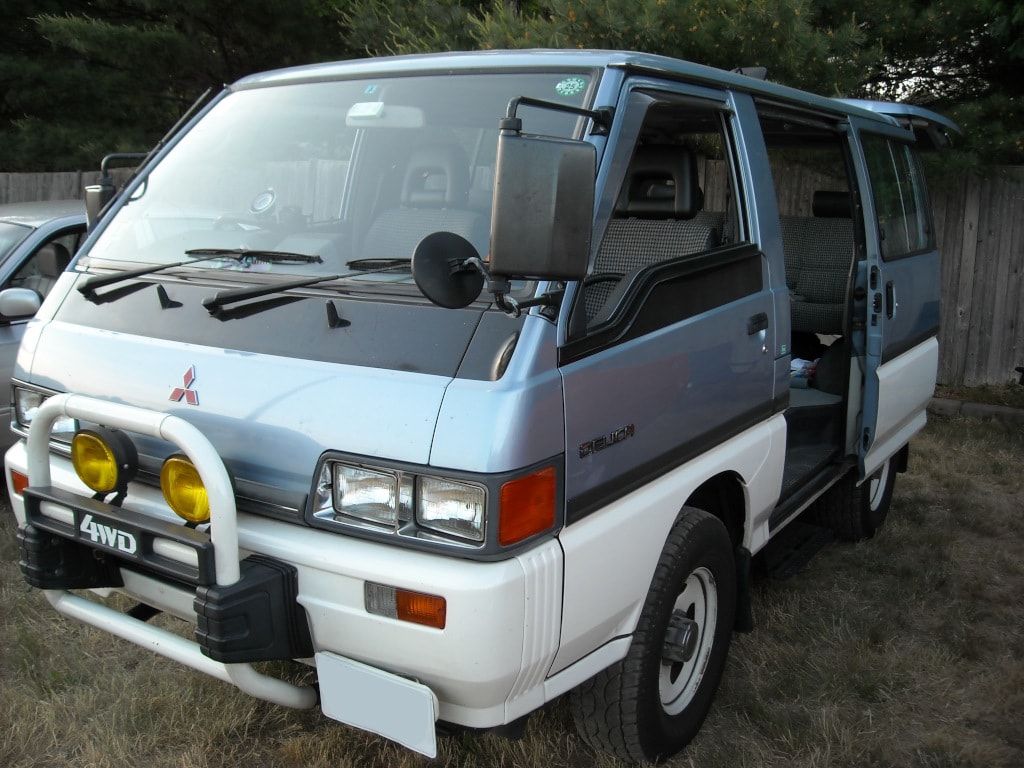
The Mitsubishi Delica, over the last few years, has accomplished something truly exceptional that no other classic JDM import has. It has crossed over and achieved mainstream appeal among outdoor lifestyle enthusiasts in the millennial generation as the go-to adventure vehicle. Why is this? The 1986-1993 (L300) Delica, with its combination of unashamedly 80s angular styling, unusual proportions by American standards, van practicality, and incredibly strong prowess off road make the Delica a vehicle that both speaks to the nostalgia of millennials for the 80s and 90s, and offers a compelling package as a go-anywhere camper for people into rock climbing, hiking, white water rafting, or any type of outdoor activity that necessitates a weekend trip.
And like pretty much everything else that considered fun and liked by millennials, it has attracted the attention of old politicians that don’t understand it and complain about it. Their response? Some states in the Northeast have started cancelling registrations without warning for Delicas specifically, as well as registrations on Kei trucks and vans that were legally imported under the 25 year rule and had been registered in those states without problems, sometimes for years. If you want to read more about that topic, I wrote another article on that here. Nonetheless, if you want to buy a Delica, do take this growing trend into mind before you proceed, or consider registering and insuring your Delica in Vermont, Florida, or some other state that will give you less headaches.
Despite the popularity of the L300, I would not advise getting one. L300 Delicas in particular can have overheating issues, which unfortunately is easy to make happen due to the fact that the most common engine, a 2.5 liter turbodiesel, is known to be underpowered. Instead, get one of the early post-1994 L400 Delicas that are eligible for importation. While it doesn’t have the angular styling and uses a unibody chassis versus the body-on-frame of its predecessor, the L400 Model is the better car. It is more comfortable, on road manners are improved, and the 2.8 liter turbodiesel of these models is known to be rock solid in terms of reliability, and has a lot more power than its predecessor.
Plus, it is just as capable off road. However, the angular styling of the earlier models is something I personally prefer, so if you do go with an L300, understand the limitations of the car, and, if possible, get one with a manual gearbox so the lack of power is more manageable. Despite the popularity, a good Delica of either of these generations remains relatively affordable, and decent Delicas are readily available for under 20k. However, prices vary depending on trim and how extensive the off road and camper modifications are. The modifying community of these vans is huge in the U.S, especially in the Pacific Northwest, and these vans have been popular to modify in Australia for decades, so the sky is the limit for customizing your Delica.
Overall, the Delica, especially the L400, is not just one of the best JDM cars for off roading, but the best option if you need an off-roader that you can sleep in for weekend excursions for outdoor activities like hiking, white water rafting, surfing, rock climbing. Get them while you still can, because politicians seem to have their eyes on killing the fun in the near future.
Best Performance Sedan: 1990-2000 Toyota Chaser/Mark II/Cresta Tourer V
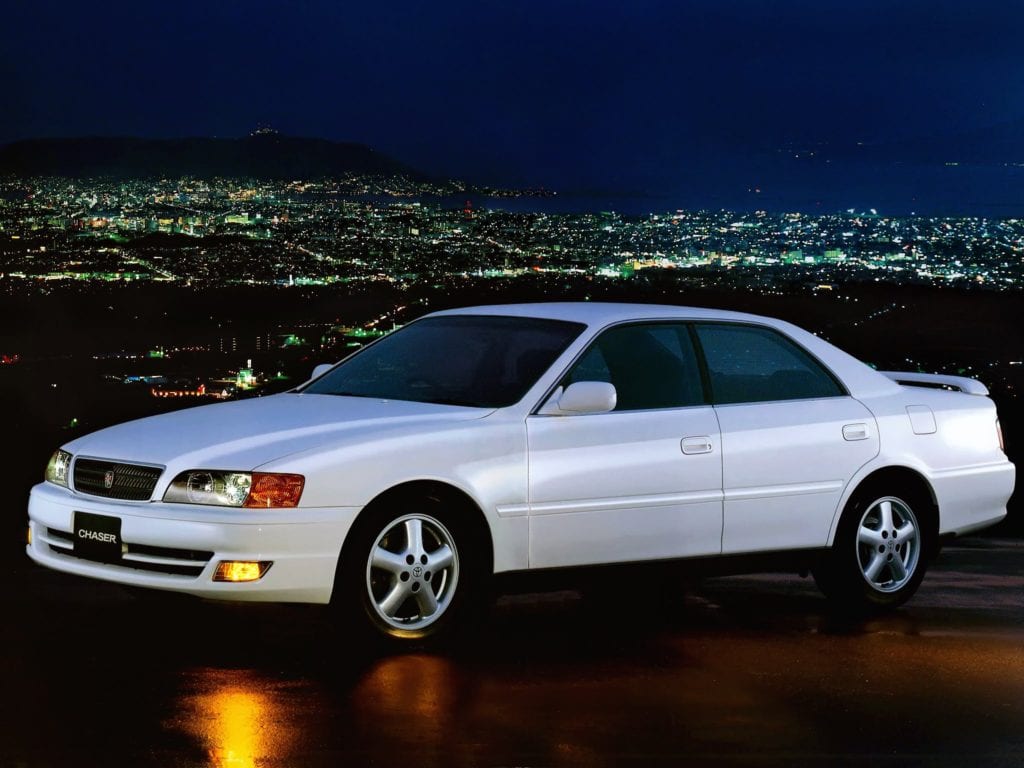
The Toyota Supra is a legend. This is in part due to iconic, distinctly 90s styling, its role as a hero car in the first Fast and Furious movie, and its ability to produce absolutely insane horsepower outputs while maintaining Toyota’s trademark reliability. Prices, consequently, are more insane than the 2008 housing market, with average, driver quality turbo models with the 6 speed manual gearbox being solidly 100k USD cars, and the absolute cleanest cars being nearly double that.
So, what now? What if you still want Toyota with a JZ engine? And what if you don’t want to spend Elon Musk money to have one? Enter the Toyota Chaser, Mark II, and Cresta. Despite three different names, they are essentially different levels of the same car, and for convenience sake, I will refer to all of them as “Chaser” since those are the most sports oriented models of the range and most likely to have the features that an enthusiast is looking for. But the points likewise apply to Mark II and Cresta models as well
The Chaser has long been popular as a drift car in Japan due to the chassis’ popularity and ubiquity as a new car making prices on the used market cheap, and the front-engined, rear-drive, manual transmission layout. Like the Supra, the Chaser was also available with a turbocharged JZ-inline 6 and manual gearbox, though this was a 2.5 liter 1JZ engine, not the 3 liter 2JZ, and a 5 speed manual instead of 6. Don’t let that put you off, because the 5 speed R154 is incredibly durable, and the 1JZ can do 90% of what the 2JZ can do, as the two engines share a lot of parts. The 1JZ also is a freer revving motor than the 2JZ, owing to the lower displacement, which some people may prefer, but either way, they are solid units that will last a lifetime when properly cared for.
This durability, desirability, and low cost has led to many of these cars being exported, notably to Russia, where they are a common car to modify and have an unfortunate reputation of being crashed. Others, over the course of the 2000s, got cut in half by exporters in Japan to sent the engines and transmissions over to the U.S, owing to their relative abundance
Otherwise, these vehicles are relatively well built, but given the age and most common use for these cars in the used market, do check for rust and any questionably repaired body damage. If you are looking at a manual, check the clutch and make sure it functions properly, as failure is a common issue with these cars. In addition, check the differential mounts and bushings, as wear on those is a known problem for these cars. Besides these two things, these cars are pretty bulletproof in terms of reliability, and good examples, while going up in value, still aren’t absurdly priced. Budget about 28-33k for a manual Chaser with a 1JZ-GTE engine in good condition, with the absolute cleanest cars going for around 37k. If you want an automatic paired with the 1JZ-GTE instead, prices are even cheaper, around 17-22k.
Overall, the combination of Toyota reliability, old-school turbo fun, and 4 doors practicality make the Chaser/Mark II/Cresta a hard to beat package. Even though it was common drift car in years past, in stock form, the comfort, fun factor, and power all make for a reliable, timeless classic that will serve you well for many years, and writing this is making me want to go and buy one!
Best Coupé: 1994-2000 Mitsubishi FTO
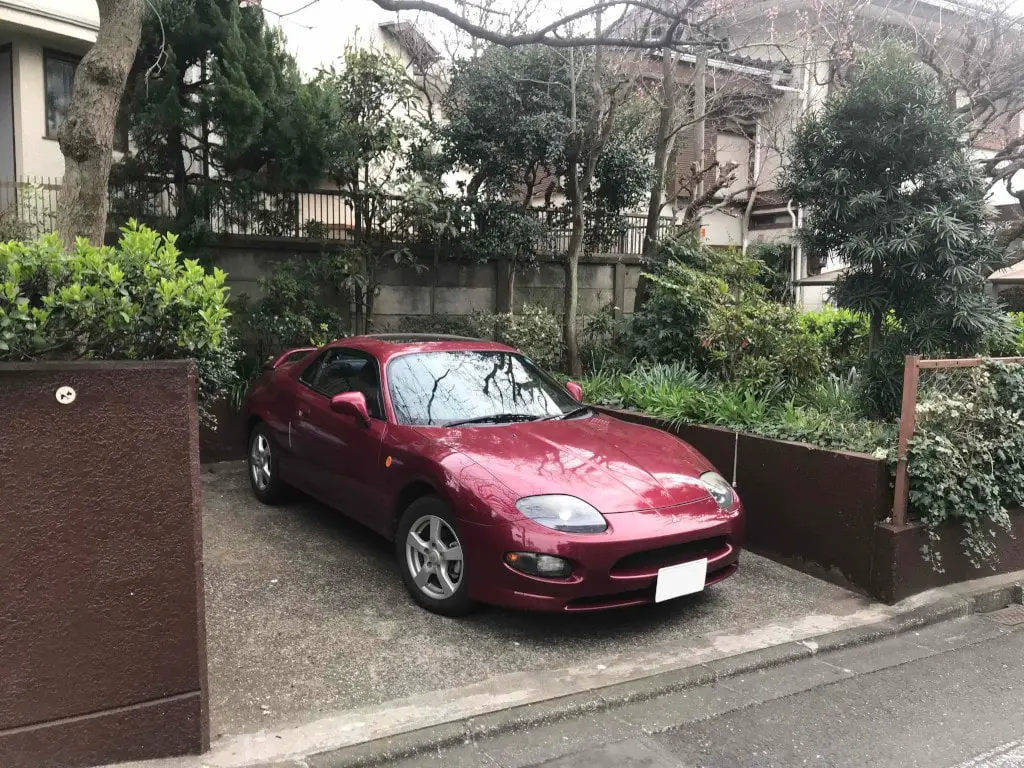
I first heard about the Mitsubishi FTO through Gran Turismo 2 when I was 6 years old, and like a lot of the JDM cars in that game, it made sense to 6 year old me. However, like most people, I completely forgot about it. That is, until I saw one while I was walking around in Tokyo 2 years back. And like a celebrity that retired years back and haven’t heard much about, seeing one made me think, “Oh yeah, I wonder how he’s doing?”
It’s unfortunate these cars were forgotten about, because they were truly special cars from an era when Mitsubishi was making cars that were reliable, capable, and years ahead of their time. For starters, the FTO came with two engine options, both of which were 2 liters, the difference being the base engine produced 168 hp, while the uprated one produced 200 hp and had variable valve timing . Sounds normal enough right? Well, these 2 liter engines are both V6s, not inline fours like the displacement would have you thinking at first, making them some of the smallest production V6s ever made.
In addition, the FTO weighed about 2600 lbs, which, interestingly enough, means the FTO produced similar power figures and weighed about the same as a DC2 Integra Type R, and those cars are legends that have been seeing prices get closer and closer to 100k at auction! When it was new, the FTO was incredibly popular as a grey market import in the UK, with 20,000 imported throughout the late 90s, yet, 2 decades on, the FTO has largely been forgotten.
Translation: prices remain quite affordable. Even the best FTOs can be had for under 15k USD, and this includes the 2.0 liter MIVEC models with the 5 speed manual, which is the one I’d get. However, the automatic also received high praise when new, so don’t be put off by it. The biggest issue of these cars, is by far, rust, so be sure to check for that, especially 25+ years on. In addition, the A/C system can be a bit finicky, as can the central locking, so ensure these are working before purchase, and avoid ones that appear to have been poorly modified, as that will make life much more difficult down the road.
Overall, the oversight of the FTO by the car buying market is your gain. Get these small, unique, and reasonably priced JDM sport coupés before everyone else finds out about them.
Conclusion
While the hero cars have become 6 figure icons, you can still have a lot of fun at a reasonable price. Any one of these cars are a solid bet for an enthusiast looking for a fun car. What classic JDM car do you want to import? Of these four, which one would you buy? Let me know in the comments below.
